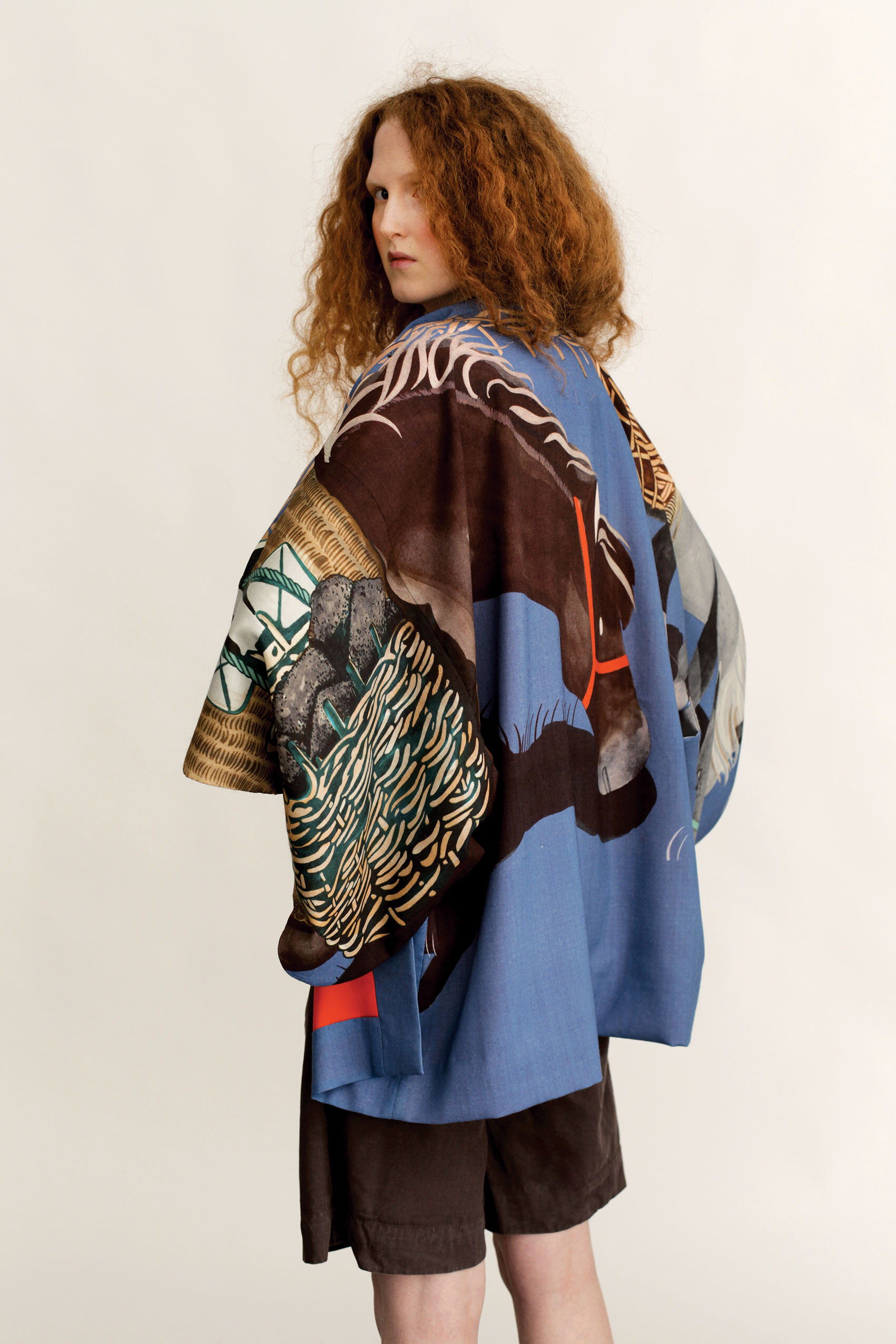SCARVES
Between 2010 and 2015 I designed scarves for an independent design label that drew on different geographies, the flora and fauna found in these locations, and cultural symbolism manifested in local material culture. Each collection was thoroughly researched via specialist museums, libraries, field trips and readings of works made by scholars familiar with the area. This resulted in the development of a collection of pieces that used drawing, painting, hand finishing and digital printing.








SCOTLAND
The scarves and haori jackets of the Scotland collection were conceived during a craft residency at Cove Park in Argyll, Scotland. During this time I took a research trip to the Outer Hebrides where I travelled from Lewis in the north to the uninhabited island of Mingulay in the south researching local textiles, history and wildlife. The textile designs, influenced by the records of the folklorist and linguists John Lorne Campbell and Margaret Fay Shaw, include Eriskay ponies carrying peats in the style of pictish stones that reflect the antiquity of this heritage breed, a paisley design with wildlife drawn from the shores of Loch Long, and the infamous Lewis Chess pieces that that can be viewed in the National Museum of Scotland, set on a shepherd’s shawl check.







The Java collection included designs inspired by the batik textiles of the Javanese Court dancers recorded by researcher Claire Holt in the 1930s, later an assistant to anthropologist Margaret Mead. Holt made collections of thousands of photographs, films and descriptions of Indonesian dance forms, records of which are held at the New York Public Library. Indonesian fauna was researched in the library at the Zoological Society of London and flora was drawn from images taken by plant explorer David Fairchild in the 1920s. The collection also uses photographs of wayang kulit shadow puppets bought from a New York flea market.
JAVA









GREENLAND
Taking as a starting point the writings, drawings and paintings of American artist Rockwell Kent, who lived and worked in arctic circle at the beginning of 20th century, the Greenland collection drew diverse inspiration from the artists of Cape Dorset in Canada and the material culture of the Greenlandic Inuit. It combines ringed plover birds with geometric icebergs inspired by diverse mark making of the Memphis design collective and artist Henry Moore.







Heavily influenced by a 1980s publication on Tibetan tiger rugs that spawned multitudes of replicas from knitted sweaters to copy rugs, Tibetan representations of spiritual beings and animal life formed a starting point for the Himalaya collection. Ceremonial capes of Tibetan monks, arrows from archers and hats stored in the collection of the British Museum in London were drawn, painted and printed on textiles alongside the mountain goats, sheep and snow leopards of the Himalaya.
HIMALAYA








MADAGASCAR
The Madagascar collection was my first experimental outing that pushed the boundary of the evolving process of digital print, and was received as such by the design press. Photographs of minerals taken in London’s Natural History Museum were spliced with geometric painted shapes. Drawings of lemurs from zoological texts joined abstract insects, photographic antelopes, and objects painted from the collections of the Pitt Rivers Museum in Oxford.